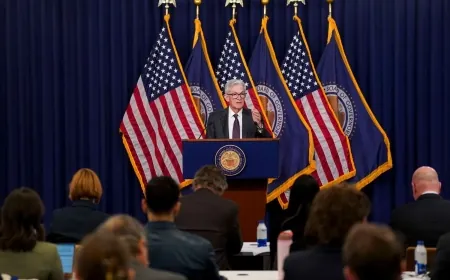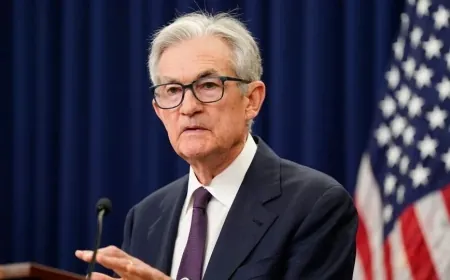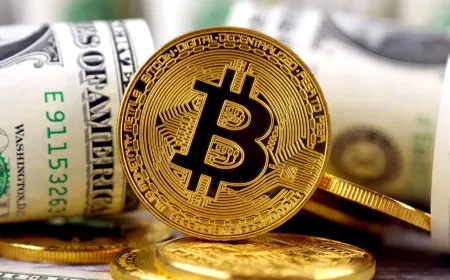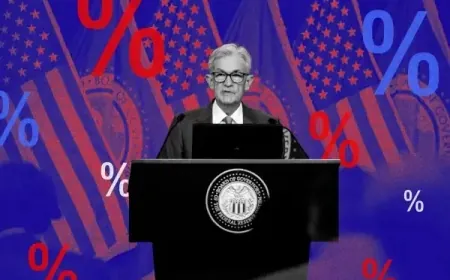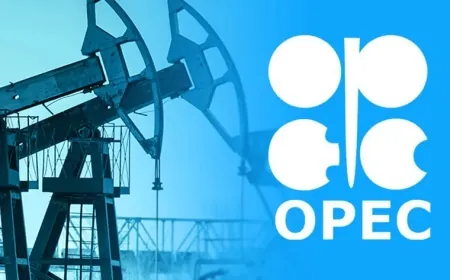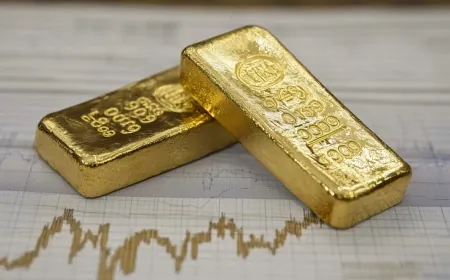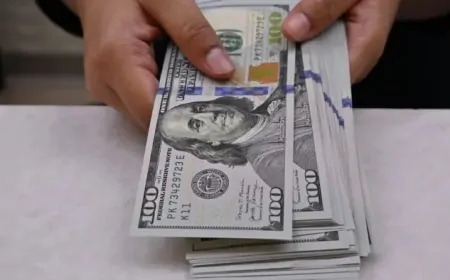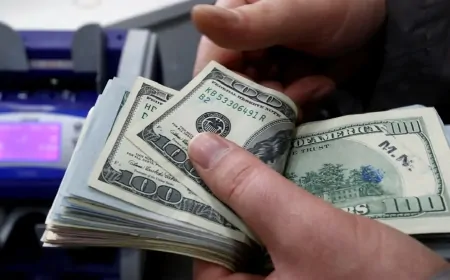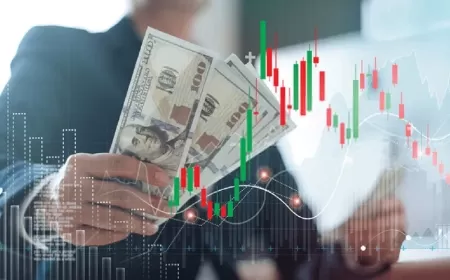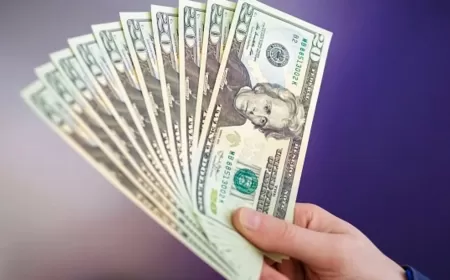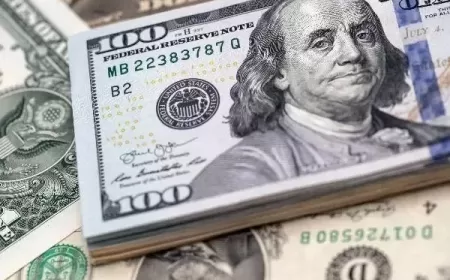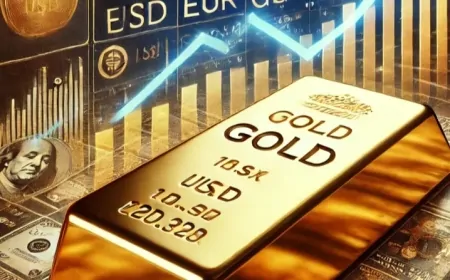Gold Hits $3,977 Following U.S. Shutdown and French Budget Deadlock
Gold reaches $3,977 per ounce. The U.S. government shutdown blocks economic reports, and France fails to pass its budget, increasing demand for bullion.
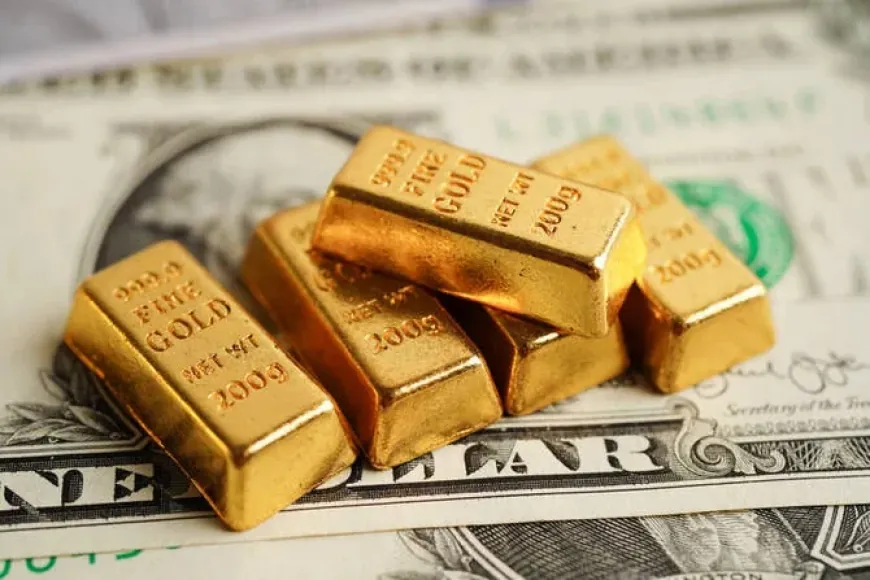
- 1 Gold hits $3,977 per ounce, extending recent record gains.
- 2 U.S. shutdown limits release of key economic data for investors.
- 3 France fails to pass budget, increasing eurozone fiscal uncertainty.
- 4 Institutional investors and ETFs maintain strong gold purchases.
- 5 Goldman Sachs forecasts gold could hit $4,900 by December 2026.
Gold surged to a new record on Tuesday, edging closer to the $4,000 an ounce mark, as political instability in the United States and France deepened investor anxiety and triggered a global flight to safety.
Spot gold touched $3,977.44 per ounce, extending Monday’s 1.9% jump, before settling near $3,964 in Asian trading. The metal has gained nearly 50% this year, marking its strongest annual performance since 1979.
The advance comes as the U.S. government shutdown stretches into a second week, leaving key economic data releases suspended and clouding the Federal Reserve’s ability to gauge the health of the economy. With limited data and weakening business sentiment, traders are betting on another quarter-point interest rate cut later this month — a move that typically lifts gold by reducing the appeal of interest-bearing assets.
“The market is running without visibility, and gold has become the simplest form of protection,” said a Hong Kong-based commodities trader.
In Europe, markets were hit by fresh turmoil after French Prime Minister Sébastien Lecornu resigned following failed talks to reach a budget deal with opposition parties. The collapse leaves France without a fiscal plan to address its eurozone-leading deficit, stoking fears of financial instability in one of the region’s largest economies.
Political paralysis in Paris, combined with fiscal uncertainty, sparked renewed buying from both retail investors and institutional funds, particularly in Europe and Japan. Analysts say the surge reflects growing concern that governments may struggle to contain widening deficits amid slower growth and persistent inflation pressures.
Adding to the sense of global unease, Japan’s ruling Liberal Democratic Party is preparing to appoint Sanae Takaichias prime minister, raising questions about Tokyo’s future fiscal and monetary direction. Her expected rise to power has briefly unsettled Asian markets already contending with softer yen levels and volatile bond yields.
The combination of these political and financial crosscurrents has reinforced gold’s role as a preferred safe-haven asset. Investors have poured billions into gold-backed exchange-traded funds (ETFs) and central banks have accelerated their bullion purchases, diversifying away from the U.S. dollar amid rising geopolitical and fiscal risks.
Analysts say that U.S. President Donald Trump’s trade and foreign policy moves have also contributed to gold’s historic rally by heightening global uncertainty and undermining confidence in traditional markets.
Gold’s strategic position within investment portfolios has strengthened further as U.S. yields fall and equity markets wobble. “At these levels, gold is not just a hedge — it’s an anchor for capital preservation,” said Ahmad Assiri, strategist at Pepperstone Group.
Reflecting that sentiment, Goldman Sachs raised its December 2026 forecast for gold to $4,900 per ounce, up from $4,300, citing sustained demand from central banks and exchange-traded funds.
Silver traded slightly above $48 an ounce, while palladium advanced modestly and platinum remained flat. The Bloomberg Dollar Spot Index was little changed, suggesting stable currency conditions despite the global turbulence.
Gold has risen nearly 50% this year, its largest annual increase since 1979. The U.S. government shutdown and France’s failure to pass a budget have contributed to strong investor demand, with prices approaching $4,000 per ounce.
Also Read: Gold Reaches $3,781 Following China’s Proposal to Store Foreign Sovereign Reserves

